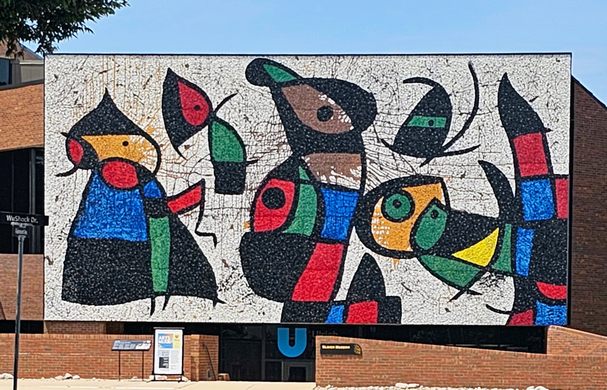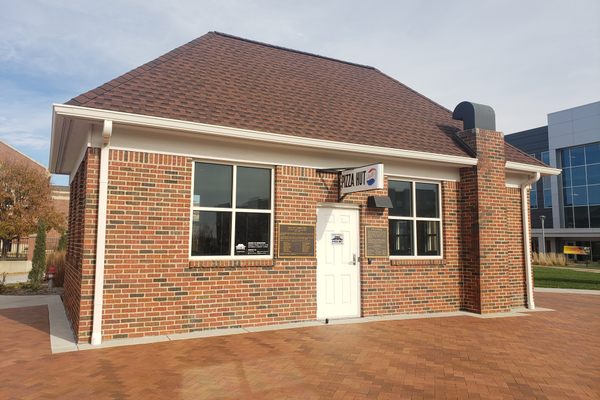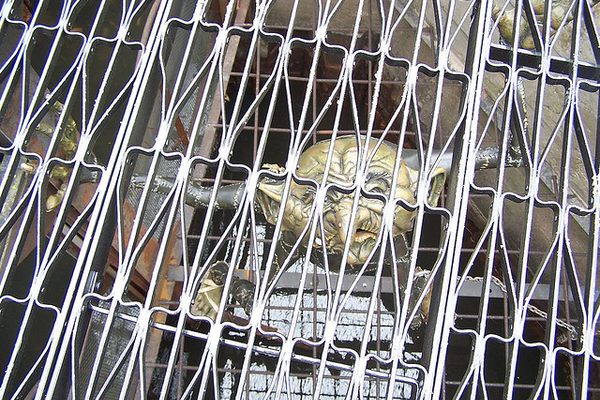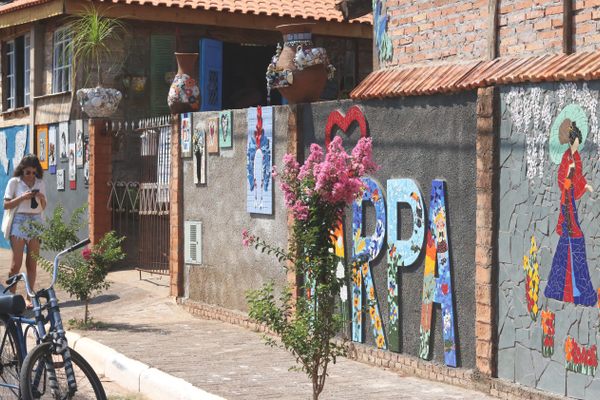'Personnages Oiseaux'
Created by Catalan artist Joan Miró in 1978 and made up of 350,000 tiles, this mural is the only large-scale glass mosaic the artist ever created.
Personnages Oiseaux (Bird People) is a massive mural on the campus of Wichita State University, created by the famed artist Joan Miró. In many ways, from timing to location to materials, the mural is a departure in Miró’s career, but its themes are core to understanding the artist. Curators at Ulrich Museum of Art, the building that is the foundation for the mural, describe it as “the most significant piece of public art in the State of Kansas.”
Miró, a Catalan artist who rose to prominence in the 1920s as a fellow traveler of the Surrealists, was in his late 70s when the mural was commissioned in 1972 for the opening of the museum. Although a world-renowned and accomplished muralist, he had never worked with glass and marble before he began this piece. At this point of his career, he was excited to work in mediums outside of painting, seeking new challenges and frequently experimenting with forms of art.
The complex project took nearly six years to complete, working with Ateliers Loire, a French studio, under Miró’s personal direction. On the verge of its completion in 1977, Miró said, “I believe it will be one of the best mosaics ever made.” The mural was shipped in 80 panels, and assembled and installed at the Ulrich Museum. Unfortunately, Miró, having fallen in his studio, was unable to attend the unveiling and see the completed work.
Although in a new medium and an unusual location, the 28’ by 52’ work contains many themes that are classic to Miró’s work. The dreamlike figures are made of irregular shapes that resemble a mixture of birds and people, frequent themes at this point in his career. They speak to the joy of life and a celebration of humanity.
Unfortunately, the mural also began to rapidly lose its shimmer. Exposed to the elements, the work would lose an estimated 300-400 tesserae each year. Finally, in 2011, the mural was removed for restoration. The tiles were cleaned, repositioned, and new tiles were created to replace those that were lost. The tiles were then brought back to Wichita on new panels that offered greater flexibility, which would expand and contract with the elements. Finally, in 2016, the mural was returned to public display, again glistening and shimmering in the sun, this time for decades to come.













Follow us on Twitter to get the latest on the world's hidden wonders.
Like us on Facebook to get the latest on the world's hidden wonders.
Follow us on Twitter Like us on Facebook